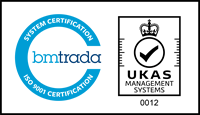News
How to measure if your reward and benefits package motivates employees and act on the findings
Posted on: Wednesday November 11, 2020
Chances are the HR system you use to administer your reward and benefits package comes with streams of usage data. The average HR team is sitting on a data gold mine: data which can be used to improve decisions, make employees happier and optimise processes.
Imagine the value data like this can add to a company. In theory, you can find out once and for all what employees value and which benefits are worth the investment. The challenge is how to leverage this insight to enable effective, validated decision making.
Daily data
We are empowered by how technology enables us to access our own data. Think of activity trackers like Fitbit, where we can view and make informed decisions based on the data which is being reported back to us.
As an individual, we can use this data to improve aspects of our lives and potentially drive or change behaviour. For example, if we wanted to get fitter and increase our daily mileage, we could use our step count data to drive behaviours which would help reach the objective i.e. increase steps per day.
It should come as no surprise that the importance and versatility of personal data are continually being developed both for commercial purposes and in organisations, particularly for HR and people functions.
Previously, HR decisions could be perceived to be based on gut feel and not on solid research and analytics. However, HR are now much more sophisticated in capturing and analysing data, which helps us continually adjust our employee offer to deliver maximum value and attract the best quality employees.
Here are four ways to measure how employees see your reward and benefits package:
1. Demographics
By collecting data regarding the demographics of your organisation, you can determine a baseline breakdown of your organisation’s makeup. In turn, this will help you deliver the most relevant benefits to each group. For example, younger members of the workforce may prefer schemes to help get them on the property ladder, whilst more mature staff members may be balancing the demands of taking care of and protecting their family, whilst trying to have one eye on saving for the future.
2. Analytics
By using analytics to see what’s meaningful to employees (either via measuring uptake of benefits via your employee experience portal’s management system, or by using methods such as surveys), and tailoring your benefits offer to fit the needs of your workforce, you can ensure that relevance is at the forefront of the reward agenda. Remember the importance of getting employees’ views, since the analytics won’t show you if something is missing or tell you why a benefit isn’t being used.
3. Compare to averages
Keeping abreast of the trends both nationwide and in your sector will help give an indication as to how your offer stacks up next to the competition. Furthermore, by understanding what other businesses are doing, particularly businesses that are doing reward and benefits well, you can find new ways to progress your strategy.
4. Consider wellbeing
Measuring return on investment for wellbeing benefits is trickier as their impact is often broader than simply reducing absence figures and turnover etc. Our sister company Innecto has been developing thoughts on Hapi.ness levers, looking at measuring how well we as organisations manage financial, physical, social and mental aspects of wellbeing to establish an overall wellbeing benchmark for the business.
To realise the full value of wellbeing, it requires a truly holistic approach, one that focuses on each of these levers and doesn’t just ‘provide a benefit’, but monitors, reviews and ensures a return on investment financially, whilst extending the employee lifetime value too. Although we should support and measure the wellbeing of the individual, it is intrinsically linked with measuring and understanding the wellbeing of the organisation in its entirety.
In summary, HR teams should look to develop their reward and benefits packages using analytics to inform their approach. Being smarter about the kind of data we collect and use will allow us to deliver best-in-class programmes that are constantly evolving based on the needs of employees.
Personal Group Appoints Helen Tinnelly as Chief Commercial Officer
Personal Group has strengthened its Senior Leadership Team with the appointment of Helen Tinnelly as Chief Commercial Officer. A dynamic commercial leader with over 20 years of experience, Helen specialises in strategy, product development, and digital...
Posted on: 12 February 2025 by Sarah Wootton
Personal Group Welcomes Arianne Riddell as Chief Sales Officer
Personal Group is thrilled to announce the appointment of Arianne Riddell as Chief Sales Officer. Arianne is a seasoned commercial leader with a stellar track record of driving sales growth and strategic innovation across technology, media,...
Posted on: 12 February 2025 by Sarah Wootton
Personal Group Named Finalist in Two Categories at MKBAA 2025
Personal Group is proud to announce its selection as a finalist in the esteemed Milton Keynes Business Achievement Awards (MKBAA) 2025, competing in the categories of 'Innovation and Technology' and 'Customer Service.' This year’s awards theme,...
Posted on: 12 February 2025 by Sarah Wootton






